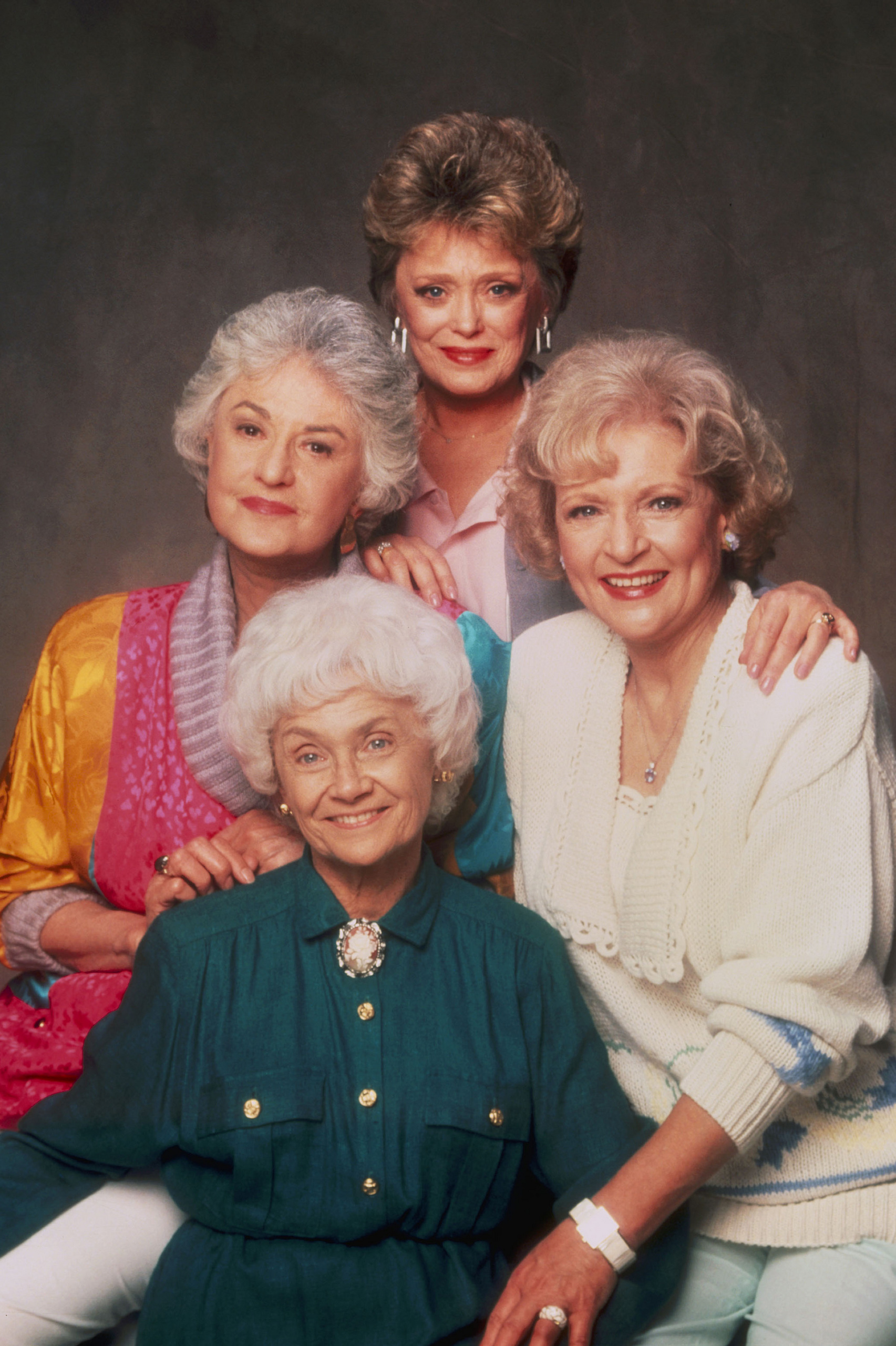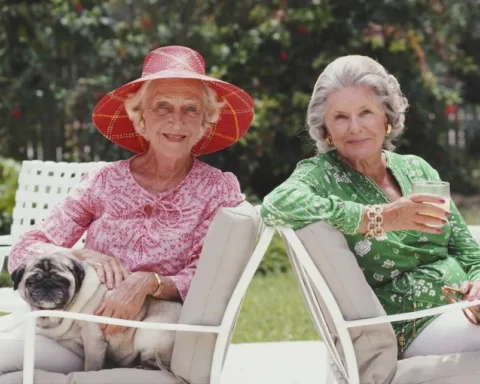Original Article: Generations Journal, Summer 2023 American Society on Aging
by Rob Lyman
Abstract: Many resources exist to explain financial planning challenges for the average person. But not many discussions focus on individuals or couples who are child-free or childless, often referred to as Solo Agers. This article examines the planning areas (financial and non-financial) that are most important for Solo Agers to focus on to maximize the probability of a life well-lived.
Key Words: financial planning, physical and mental health, community living options, estate planning, support team for aging, long-term care expenses, Life Plan Community
Much has been written about how Solo Agers have different financial- and life-planning issues from non-Solo Agers—but is this true? Instead, life circumstances of Solo Agers call for a more intentional focus on many of the traditional financial- and life-planning strategies that everyone should consider, including these aspects of modern life:
- Spending, saving, and investing. Building financial resources to meet lifetime spending goals, including making work optional at some point.
- Creating lifetime income. Creating a sustainable retirement income to fund desired lifestyle spending after work.
- Maintaining good physical and mental health. Maximizing one’s enjoyment during life as well as reducing healthcare costs and the duration of incapacity and/or morbidity at the end of life.
- Implementing sound risk-management strategies. Minimizing the negative effects of premature death, disability, loss of property, liability, and injury, sickness, loss of agency, or incapacity later in life.
All the above areas are important for both Solo Agers and non-solos. However, Solo Agers don’t have the traditional (and often falsely assumed default) backstop of children to support them later in life if they need help. Hence, they should be acutely aware of areas in which they are vulnerable as they age.
Even though a Solo Ager may have many non-solo friends (a solid community network), those non-solo friends may become more involved with grandkids (if they have them) or may move closer to their children if they need support as they age. These common eventualities can undermine the community fabric of Solo Agers who are left behind. Solo Agers have special and unique concerns as they age and may want to intentionally create a layer of support that will keep them safe and allow them to thrive as they age.
This article does not provide an exhaustive review of financial planning topics relevant to Solo Agers. Instead, it focuses on the areas of concern Solo Agers might reasonably consider. As an example, spending, saving, and investing are important to everyone, but there is no real difference in focus required between Solo Agers and non-solos; hence, these important topics are not covered here.
Instead, the focus is on those areas of special interest and importance to Solo Agers:
- Investing in Foundational Health
- Optimizing Social Capital: Social Security and Medicare Benefit Elections
- Selection of a Residential and Community Living Option
- Creation of a Support Team for Risk Mitigation
- Funding Long-Term Care Expenses
It turns out that implementing solutions in each of these areas is multifaceted and interdependent. One example is how the choice of a residential and/or community living option feeds back into one’s sense of purpose and overall mental health, enhancing foundational health (which includes physical and mental health, both of which are foundational to happiness). The optimal set of solutions is unique for each Solo Ager.
Investing in Foundational Health
Traditional financial planning discipline generally limits itself to areas directly impacted by finances, but healthcare costs can rapidly consume personal assets, so investing in foundational health is a relevant financial planning topic. Still, it is largely ignored by the financial planning community, as financial planning professionals often don’t have direct expertise in advising on choices that promote good foundational health.
‘IT IS IMPORTANT TO CONSIDER DELAYING THE SOCIAL SECURITY RETIREMENT BENEFIT TO PROTECT AGAINST SUPERANNUATION.’
Still, an intentional focus on foundational health is important precisely because selected practices may (a) reduce the occurrence of or (b) minimize the duration of time that a Solo Ager might experience loss of independence due to mental or physical impairment, or morbidity. Minimizing such factors directly corresponds to minimizing their financial costs (both in their magnitude and the duration over which they might be due). Of course, minimizing these factors also directly corresponds to maximizing the proportion of one’s life that is fulfilling, purposeful, and joyful.
All of this argues for Solo Agers to place special focus on creating and maintaining long-term foundational health—both physical health and mental health components. Having a plan for maintaining good long-term mental health is especially important for Solo Agers, and is closely related to other important areas, such as putting a support team in place or even choosing from among various residential living options. Much has been written on how to enhance foundational health over one’s lifetime (including elsewhere in this Journal), so this article will not cover it.
Optimizing Social Capital: Social Security and Medicare Benefit Elections
Two important social-benefit programs in the United States provide critical resources later in life: Social Security as a supplement to long-term sustainable income and Medicare for protection against the risks of injury or sickness. Deciding how to take benefits from each program is important for all, but particularly crucial for Solo Agers.
Social Security Benefit Election
Even if a Solo Ager has accumulated enough financial resources to fund their post-career lifestyle for their expected lifetime, it is important to consider delaying the Social Security retirement benefit to protect against superannuation. The primary reason for this is to increase the proportion of sustainable lifetime income that is guaranteed and not subject to the vagaries of the capital markets, as are portfolio distributions. Although one must forgo monthly benefit payments from full retirement age (FRA; generally ages 66 to 67) until age 70, one earns delayed retirement credits, which increase the monthly benefit amount by 8% per year of delay. These increased payments continue until death, at the higher rate.
For Solo-Ager couples a similar strategy can be followed. This approach may or may not pay a higher lifetime benefit but is attractive to Solo Agers from a risk management point of view. Depending upon Solo Ager risk preferences for lifetime income, other mechanisms also can be used to lower superannuation risk, including the purchase of single premium immediate or longevity annuities or even implementing tenure payments via a reverse mortgage.
Medicare Benefit Election
For Solo Agers, selecting a healthcare plan is critical as this becomes one’s primary healthcare-related support structure later in life and the costs of such care are significant. The primary considerations for Solo Agers are whether to choose a traditional Medicare plan (including Parts A, B, and D, together with a Medigap plan) or to go with a Medicare Advantage plan (Part C). Generally, the tradeoff is between cost and flexibility. Traditional Medicare plans offer more flexibility in choice of doctors and options but are also typically costlier from a total premiums-paid standpoint. Medicare Advantage plans can have lower ongoing premiums but may have annual out-of-pocket maximums that can be greater than the more stable premiums of traditional Medicare. Therefore, one’s choice of Medicare program should consider available financial resources as well as health history.
Navigating the healthcare system can present significant risks as one ages, so Solo Agers may want to include a pre-selected professional (e.g., an independent board-certified patient advocate) as a part of their support team to help navigate their chosen healthcare plan.
Selection of Residential and Community Living Options
The selection of a later-in-life residential option is one of the most critical planning decisions a Solo Ager makes. The selection impacts happiness (in that the option represents a desirable place to live) and the Solo Ager’s long-term safety and foundational health. To the extent a Solo Ager’s choice of residential living builds community and engagement, it can provide an environment that allows them to remain involved with others, not become isolated, and maintain good long-term mental health. This choice also can have a significant impact on the Solo Ager’s financial plan, as this decision dictates the level of one of the Solo Ager’s most expensive expense streams during retirement.
Fortunately, there are many later-in-life residential living options for Solo Agers and more becoming available every year as the senior housing industry moves to accommodate changing senior-living requirements.
Solo Agers should review all the options and choose an arrangement that aligns with their goals, understanding both their financial situation and the unique needs of Solo Agers in general, i.e., maintaining agency and having support when needed (Geber, 2021). Excluding end-of-life options (such as skilled nursing care, board-and-care units, and hospice), the following options are the most common:
Aging in Place and/or Relocation
Relocating to a safer style of home (one level, fewer square feet, newer and more age-friendly appointments, closer to stores and/or entertainment) is, for many Solo Agers, thought to be the best option. It might be a condominium or apartment complex near shopping and services, a smaller, one-level home in an ages 55 and older (also called Active Adult) community (see below), or a mobile home park.
All these options provide opportunities to befriend neighbors and build community. However, like remaining in one’s home, this option also engenders isolation and lacks later built-in support. If the Solo Ager needs care later in life, this option is one of the most expensive for bringing in support.
Auxiliary Dwelling Units (ADUs)
In many areas around the country, it is legal to erect auxiliary dwelling units (ADUs) on a property with an existing home. The dwelling holds many possibilities, among them renting to another Solo Ager, installing a younger family member, offering housing to a young person for reduced rent in exchange for household help and companionship, or the unit could be used by a caregiver. If a Solo Ager owns their own home and has the space, this can be a viable option.
Shared Housing
Shared housing—à la The Golden Girls—is a popular choice for increasing numbers of Solo Agers. In this scenario older adults share space (a financial upside) and have built-in human engagement (a community) by matching people who have unused space with others who are looking for housing. There are matching services available, like Silvernest and Roomily, that can facilitate an arrangement anywhere in the country. Another resource is the American Seniors Housing Association.
Cohousing or Intentional Communities
Another option is to join a group of people who have chosen to live together because of a common purpose, and work cooperatively to create a lifestyle that reflects their shared core values (see cohousing.org or EcoVillage). Typically, such groups investigate acquiring land and building a housing complex to support community living. Although living spaces are typically small, there are usually communal areas, gardens, and walkways where residents can share meals, activities, and gather socially.
Village Movement
The Village Movement is an age-in-place option in which members form a (typically nonprofit) community group to help each other age with some built-in support and community. Most Villages charge an annual membership fee and offer members transportation, reliable professional services, help with finding in-home care, and other support services. Younger members can join, often at lower rates, becoming “social” or “associate” members.
Senior Retirement Communities or Active Adult Communities
Generally for people ages 55 and older, senior retirement communities or active adult communities have no built-in health services, but are great for building and maintaining community, which is a critical component of healthy aging.
Life Plan Communities (or Continuous Care Retirement Communities)
These non- or for-profit communities often have multiple independent living options (apartments, condos, detached residences), along with additional options with care (memory unit and skilled nursing). Life Plan Communities offer three basic contract structures: (a) an initial buy-in which pre-pays future healthcare expenses (in return for predictable monthly fees that don’t increase substantially if healthcare is needed later); (b) a lower initial buy-in, with monthlies that increase if healthcare is needed later on, but it’s provided at a discount to market rate; and (c) a lowest buy-in with monthlies that increase if healthcare is needed later on, charged at market rates.
‘SHARED HOUSING—À LA THE GOLDEN GIRLS—IS A POPULAR CHOICE FOR INCREASING NUMBERS OF SOLO AGERS.’
Generally, some proportion of initial and ongoing fees are considered a prepayment of future healthcare expenses. That proportion of fees may be income tax deductible when paid, lowering the overall after-tax cost of such communities. These communities provide high levels of available, ongoing support but are also one of the most expensive options. Communities have their own personality, so interested Solo Agers can pick a like-minded community.
Creation of a Support Team for Risk Mitigation
Solo Agers often wonder, “Who will take care of me?”—and this question belies the special circumstance of Solo Agers not having a “built-in” team to provide support later in life, if needed. Hence, one of the most powerful planning steps a Solo Ager can take is to put that support team in place, intentionally and proactively.
Create a Traditional Estate Plan for Care of the Person
Most people think of an estate plan as being the plan for how a person’s assets are distributed at death. An estate plan provides this, but an arguably more important aspect of an estate plan is to create legal support for a person during their lifetime, typically after they lose decision-making capacity. It is critical for Solo Agers to complete a traditional estate plan in which they have thought carefully about selecting people who are named to the standard estate plan roles listed below.
Naming people to legal roles in an estate plan begs the question of who to nominate. For non-Solo Agers, children are frequently named. For Solo Agers, an appropriate person to nominate may not be as obvious. Nieces or nephews, if available, are often a good choice. More distant family members, preferably a generation younger, also might be appropriate. If a Solo Ager has no family members who could serve in this role, trusted friends, or a private professional fiduciary (allowed by a growing number of states, see next section) can be named. A final choice might be a paid bank trustee or other fiduciary.
Power of Attorney (POA). The person in this role is legally responsible for the “care of the person” and handles the affairs of the person (as a fiduciary for their benefit) after the Solo Ager has lost legal capacity. One’s designated POA is typically empowered on the written authorization of a physician. This is an important role that also has legal authority over the financial resources that have not been explicitly placed in trust (as is common in community property states).
It is important to designate a POA who has good judgement and financial sense. Additionally, it is important this this person is in contact with an Aging Life Care Professional (senior or geriatric care manager) whom the Solo Ager has vetted and selected in advance (see next section). Setting up this relationship in advance in a plan provides a “backstop” to help the selected POA handle an emergency or unplanned situation in a way that is aligned with the Solo Ager’s values.
Successor Trustee. This person administers trust assets for a revocable lifetime trust for the benefit of the Solo Ager after they become incapacitated and is a common estate plan role in community property states. Generally, unless there is a good reason not to, this role can be filled by the same person as the POA.
Healthcare Agent. Typically named in an advanced healthcare directive, this person makes healthcare decisions if the client is unable to do so. If the Solo Ager also works with a professional healthcare advocate (see next section), then it may be important to introduce the healthcare agent to the advocate as an additional resource. The best person to name as healthcare agent may not be the same person chosen for POA and/or successor trustee.
End-of-Life Wishes. Finally, it is critical for Solo Agers to make sure their estate plan clearly includes a description of their end-of-life wishes. This is typically done with an Advanced Healthcare Directive. This portion of the plan specifies to what extent doctors should strive to keep a person alive, and often, whether to elect organ donorship. An excellent resource to help clients understand the importance of this part of the plan is Being Mortal, by Atul Gawande (2015).
Complement Estate Plan with Additional Support Team Members and Written Plan
A properly executed estate plan with appropriate selections for Power of Attorney, Successor Trustee (if applicable), and Healthcare Agent is a good first line of defense for the Solo Ager. In practice, there is a lot of gray area between being a fully capable older adult and being declared legally incompetent (when a nominated POA can spring into action to support a Solo Ager who is losing capacity).
As an example, a Solo Ager (while having full capacity) may begin to lose their ability to independently act by themselves, losing their ability to perform Instrumental Activities of Daily Living (IADLs) such as managing finances, preparing meals, or shopping. In this case, the Solo Ager has become dependent—needing help from others. A good plan would anticipate this possibility and at a minimum provide direction to the persons nominated in the Solo Ager’s estate plan.
A more comprehensive plan would create additional support team members, along with written directions for how to handle common issues. When the time comes, having a written plan in place with specific preferences spelled out will empower a Solo Ager’s support team to work together effectively for the Solo Ager’s benefit. Here are some of the most important roles to consider including in a supplemental team. Note that although professionals are called out below, friends or family members can be recruited to perform any of these roles.
Check-In Person (early-warning system). Someone who sees the Solo Ager periodically in their normal course of life and who can alert others on the team if action is necessary. Some financial advisors can fulfill this role.
WOMEN REQUIRE AN AVERAGE OF 3.7 YEARS AND MEN 2.2 YEARS OF LONG-TERM CARE IN LATER LIFE.
Senior Care Manager/Gerontologist. These professionals can independently assess whether someone needs support and can put together a comprehensive plan, depending upon the circumstances. A Solo Ager can interview and select a person who understands and is aligned with their values and can communicate to their POA that this person is a trusted resource.
Healthcare Advocate/(Board Certified) Patient Advocate. A professional who can help the client navigate the healthcare system, which can be overwhelming and difficult to access, especially in a crisis.
Financial Planner/Advisor. A professional who provides financial advice and/or investment management services. If a Solo Ager becomes incapacitated, the designated fiduciary (POA and/or successor trustee) will make the final call on hiring and/or retaining this professional. Some financial advisors will serve in the Check-In Person role so that person can proactively contact other members on the Solo Ager’s designated support team to initiate the plan; this requires a waiver of confidentiality.
Tax Professional/Preparer. A professional who manages tax return preparation and compliance.
Bill Payment/Cash Flow Management. Vendors are available to handle these functions, such as Silver Bills. An alternative strategy is to have bills paid automatically, preferably via credit card, or if necessary, ACH (Automated Clearing House) debit from a checking account.
Funding Long-term Care Expenses
Even if a Solo Ager has diligently implemented a comprehensive support plan, including making health investments (to help minimize any period of morbidity or loss of agency/capacity), most individuals experience some period of care and support at the end of their lives, and the duration of this period is unknown.
According to 2020 data from the U.S. Department of Health and Human Services, nearly three-quarters of people who reach age 65 will need some long-term care services or support, with women requiring an average of 3.7 years and men 2.2 years (Administration for Community Living, 2020). Importantly, private health insurance, including Medicare, does not cover long-term care or custodial services that include supervision and/or help with normal Activities of Daily Living (ADLs). As these care expenses can be quite expensive, it is important for Solo Agers to carefully consider how to fund such expenses. The approach a Solo Ager chooses often is driven by prior experience (including whether they have provided care for a parent) as well as values and preferences for funding such expenses. There are a range of possibilities, including the following.
Self-Insurance
Self-insuring these costs is one option, but this generally requires both a fully funded retirement plan and a period of end-of-life capacity that is not significantly longer than average. In such cases, self-funding from accumulated financial resources may be a viable option. In this option, the Solo Ager believes they have sufficient accumulated financial resources to directly pay for any period of long-term care, or accepts the option of exhausting their financial resources in a private pay long-term care option and then transitioning to available public Medicaid services (see below).
Long-term Care Insurance (LTCI)
Long-term care insurance is another option to help pay unanticipated long-term care expenses. After underwriting approval, policy holders pay a premium and generally become eligible for a specified pool of lifetime benefits (generally paid out as a daily limit for care until the limit is reached). Benefits become available when insureds can’t perform at least two ADLs (i.e., bathing, toileting, dressing, eating, grooming, cooking, finance, housekeeping), and start after an elimination period of 30–90 days. Some insurers offer “shared” policies for couples, allowing two spouses to access a single pool of lifetime policy benefits.
In recent decades, the cost of such long-term care insurance has risen substantially, as insurers faced a low interest rate investment environment (and struggled to earn returns that could pay for rising long-term care costs). Insurers also markedly overestimated lapse rates for insureds, assuming 4% when the actual lapse rate is closer to 1% (Cheng, 2021). Additionally, as long-term care costs rose, insurance companies have applied to state regulators for approval to raise premiums. Such applications have generally been approved because regulators wanted to keep existing policies viable so that claims can continue to be paid.
Long-term care insurance is not a panacea for funding unanticipated long-term care costs, but this type of insurance is one important tool for Solo Agers to mitigate the risk of such costs. Careful consideration should be given as to whether the premiums are affordable for a Solo Ager’s financial circumstances.
Medicaid, Home- and Community-Based Services
Solo Agers without adequate resources to cover an extended period of required long-term care may find themselves without any means of support. In this circumstance, some home- or community-based services may be available to help with long-term personal care. Medicaid may cover some level of services such as home care (cooking, cleaning, or help with other daily activities). However, available Medicaid services vary greatly by state.
Conclusion
Although most older adults with non-estranged adult children will insist they are not counting on their children for any kind of support, Solo Agers don’t have a default long-term support plan. By placing intentional focus on key areas such as foundational health, residential and community living options, and the creation of a traditional estate plan with additional support roles, Solo Agers can create an intentional long-term plan that not only supports them in the future, but also provides more peace of mind today.
Rob Lyman is president of Johnson Lyman Wealth Advisors, a boutique wealth management firm in Los Altos, CA, that specializes in the needs of Solo Agers.
References
Administration for Community Living. (2020). How Much Care Will You Need? https://acl.gov/ltc/basic-needs/how-much-care-will-you-need
Cheng, M (2021). How to Handle an Increase in Your Long-Term Care Premiums. Kiplinger. www.kiplinger.com/retirement/long-term-care/long-term-care-insurance/603986/how-to-handle-an-increase-in-your-long
Gawande, A. (2015). Being mortal. Profile Books.
Geber, S. (2021). Solo agers: Plan NOW if you want to thrive in later life. Forbes. www.forbes.com/sites/sarazeffgeber/2021/05/20/solo-agers-plan-now-if-you-want-to-thrive-in-later-life
Cheng, M (2021). How to Handle an Increase in Your Long-Term Care Premiums. Kiplinger. www.kiplinger.com/retirement/long-term-care/long-term-care-insurance/603986/how-to-handle-an-increase-in-your-long












